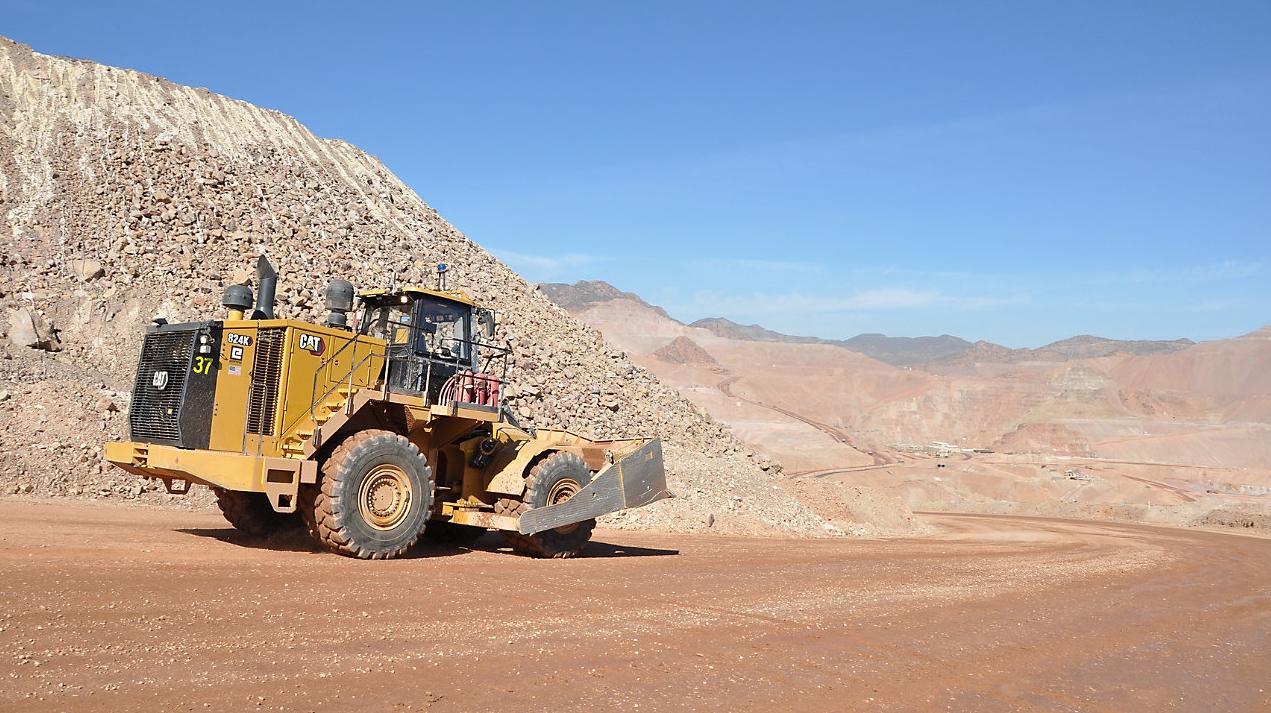Mining companies are always looking for productivity. How fast can we drill, mine and access ore? How much stone can we load in one move? How many tons can we transport in a year?
Trucks and loaders are the heroes of an open pit mine where they are tasked with moving valuable material. But businesses that are mindful of the importance of utility vehicles like bulldozers, graders and wheel loaders will see increased productivity and profitability as these machines allow equipment loading and unloading to do their job more efficiently.
From the construction and maintenance of transport roads to the cleaning of loading and unloading areas, utility vehicles have a direct impact on productivity. There are different types of equipment that perform similar tasks and it’s important to understand the differences to make sure they’re being used in the right application to deliver maximum value.
Caterpillar’s Kent Clifton, Senior Surface Marketing Specialist, helps miners understand how to make the best use of auxiliary machines and how to optimize them on site. He recently shared his opinion on wheel loaders.
UNDERSTANDING WHEEL DOZERS
Wheel loaders combine the performance of tracked tractors with the mobility and versatility of wheel loaders. Cat® Wheel Loaders are based on Cat wheel loaders designed for the mining industry with designs and drivetrains designed for spraying.
They can be found in various applications, for example:
- Cleaning the loading area.
- Landfill maintenance
- Transportation of buildings and maintenance of roads
- Construction and maintenance of safe docks
- Cleaning up the explosion site
- Waste sorting
- loads of storage space
“You really want to take advantage of its versatility,” says Clifton. “They are really very useful when working with hydraulic mining buckets, backhoe loaders and electric rope grabs. They just make the process more efficient.”

COMPARING TRACK AND WHEELED DOZERS
Crawler bulldozers have traditionally been used to support mines. Robust and reliable, they have a power-to-weight ratio to push heavy loads. But when mobility, speed and versatility are the most important aspects of an application, Clifton suggests considering a wheeled dozer.
When used correctly in the right areas, wheel loaders can reduce fuel costs, lower undercarriage costs, and save money on mining by reducing the amount of support equipment needed on site.
“A good rule of thumb that I use is that if you’re constantly loading your blade between 70 and 110 percent and don’t need mobility, you should look into a tracked tractor,” says Clifton. “If you need mobility and zero to 70 percent load per knife, you need mobility and quick exit from the truck, then we recommend you consider a wheel loader.”
To help its customers understand and compare machines and their applications, Caterpillar produces the Caterpillar Productivity Guide. The guide provides the following considerations when choosing between a crawler dozer and a wheeled mining dozer:
- Speed. Bulldozers operate at three times the speed of bulldozers.
- Maneuverability. Articulated steering and good visibility give wheeled tractors high maneuverability.
- Use it. Mobility, maneuverability and good speed make wheel loaders suitable for gardening and storage, as well as cleaning around loaders. Lower maintenance costs can be achieved in certain areas that can be very abrasive to the tracked undercarriage.
- A pile of coal. Wheel distributors are recommended in this case when the following conditions are met:
- Large sliding distances
- The need for a good distribution of materials
- Desirable high compression ratio
- Production dosage. The distributor on wheels should be considered under the following conditions:
- Large sliding distances
- Loose earth, few or no stones
- Working on level ground or on a slope
- Good condition underfoot
- Pushloading Scrapers. The distributor on wheels should be considered under the following conditions:
- Fine scratch
- Good ground conditions – no stones
- Higher pull speeds
Clifton encourages miners to carefully study the specific conditions of their site in order to find suitable equipment. For example, if a truck is fully loaded and a bulldozer will be clearing the site all the time, a crawler tractor would be ideal. “It will provide more value in this application because you don’t have to be mobile with this tractor.” It will stay in a special dump all day.”
However, if the area has landfills scattered throughout the area, it is better to choose a dumpster. “If I have two or three trucks and I don’t use them all but have to maintain them, a wheeled dozer gets from place to place much, much faster,” he says.
USING A WHEEL DOZER ON HAUL ROADS
There is no doubt that graders are the best tool for road repair and maintenance. They help create and maintain a consistent slope and adequate drainage, and provide a level floor in the loading and unloading areas. But sometimes the ideal auxiliary machine for a grader is a wheeled bulldozer.
A truck spill is one example. “I don’t want to lift the grader blade to drop it or change the grade along the way to clean up the truck’s mess,” says Clifton. “So I can take the walkie-talkie and call the front loader.” It will be very quick to go out and clean up this mess, push it to the side of the road, and then do other things at the mine.



